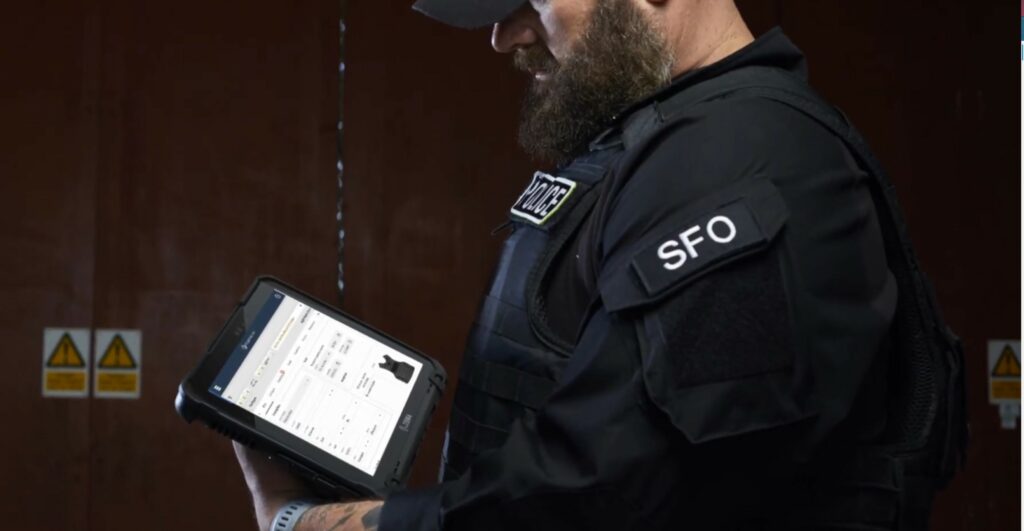The solution from Collective Data, using Zebra technology, enables users to capture information about status and location of evidence, and each time evidence tags are read.
Sep 08, 2023Law enforcement agencies are deploying RFID technology-based versions of an asset and evidence management solution that automates the identification of items that are stored, borrowed, or assigned to an officer. The solution from Collective Data makes it possible for agencies to leverage a single hub on which they access information about everything from seized evidence to officer uniforms, vehicles, and weapons.
Collective Data has offered its Quartermaster management software for nearly 25 years to help agencies manage assets. The company has more than 300 live deployments tracking not only evidence but also assets, tools, and fleets of vehicles. The introduction of UHF RFID technology, with Zebra Technologies readers, printers, and labels, began in the past few years and is being offered to Collective Data’s existing and new customers to capture data automatically.

So far, the technology has been deployed by a handful of agencies to help better manage evidence assets, says Tim Langer, Collective Data’s Sales Director. While most items have been tracked with barcodes in the past, RFID makes identification faster and more accurate and reliable, he says.
When it comes to evidence management, law enforcement agencies must follow strict protocols related to proper evidence collection, documentation, and storage, as well as auditing and even disposal processes. There’s no room for error. “One slip-up can lead to a case dismissal, a mistrial, a wrongful conviction, or loss of public trust,” Langer says. And manual efforts to manage the evidence can be expensive and inefficient.
Agencies face challenges related to asset management as well, including lack of visibility of the tools officers take into the field. Agencies often spend a significant amount of money on asset management, Langer points out, for example, purchasing new assets, repairing damaged assets, and hiring the staff to manage them.
This is a challenge that RFID is suited to address. Barcodes provide unique identification of evidence at many sites, and when scanned, the data can be updated in the system software. However, barcode scanning (or even manual recording of data) can be time consuming and introduces the possibility of errors. “That's where RFID comes in,” Langer says.
How the System Works for Evidence Management
In a typical deployment, each piece of evidence comes with a UHF RFID tag selected for the item’s formfactor – whether bagged objects like clothing or cash, or a weapon. The unique ID encoded on the tag is then linked to details about the evidence in the Quartermaster software. Typically, a handheld or desktop reader is then provided to officers stationed in the evidence room or storage area.

Tim Langer, Collective Data’s Sales Director
When officers need pieces of evidence, they bring their requests to the individual in the storage area and provide a barcode or RFID-enabled ID. The ID is read or scanned by the reader, and the tagged pieces of evidence being removed are also read to link those items to the officer. The status of each item is then updated in the software so that evidence can be located at any time, or the responsible officer can be identified and located.
Similarly, the technology can be used to borrow or receive agency assets such as uniforms, radios, ballistic vests, or weapons. The officer’s ID is linked to the items being taken, creating a digital record.
A handheld RFID reader could also be used in Geiger-counter mode to locate items that an officer is requesting, such as a size large helmet.
Several agencies are also planning to adopt a version of the solution that would provide real-time data about the status and location of assets or evidence. Collective Data is testing Zebra fixed or portal readers that could read tag IDs automatically in an evidence room. This allows management to understand what items are in storage and where they are located, as well as when they are removed.
“This real-time tracking is in our beta mode,” Langer says. Collective Data customers have said they want to know not only if evidence is in or out of storage, but what’s happening to it in real time.
Tracking Vehicles, Ballistics Vests and More
The technology also helps law enforcement track fleets of vehicles and what assets are in those vehicles. “We’ve been integrating barcoding and RFID with their vehicles,” says Langer, so that those conducting inventory counts can quickly view information, such as the equipment in each vehicle. This audit data provides greater daily visibility into where assets are, when they go missing, or are in the wrong vehicle.
 Users frequently start with one application, such as tracking evidence, and then expand to other assets. The data for all systems is visible on the single Quartermaster hub.
Users frequently start with one application, such as tracking evidence, and then expand to other assets. The data for all systems is visible on the single Quartermaster hub.
While Collective Data offers tagging services, Langer says the company’s customers frequently discover how easy it is to apply and commission their own tags to get new assets or inventory into the system.
While asset management systems have provided RFID for evidence management in the past, Collective Data argues that its solution – with RFID – requires less configuration and integration than earlier solutions. It can be hosted in a cloud-based or dedicated server and does not need to be integrated with an agency’s asset management software.
The solution also benefits from the improved performance and lower cost of RFID technology. Collective Data sources all tags, readers, scanners, and printers from Zebra. It offers its solution on a monthly subscription basis.
Key Takeaways:
- Agencies are deploying RFID technology from Collective Data to automate the capture of data on collected evidence as it is stored, moved, or borrowed by an officer.
- The solution also accommodates asset management – from vehicles to uniforms – so that an agency can view the status of all its high value items in a central hub.

